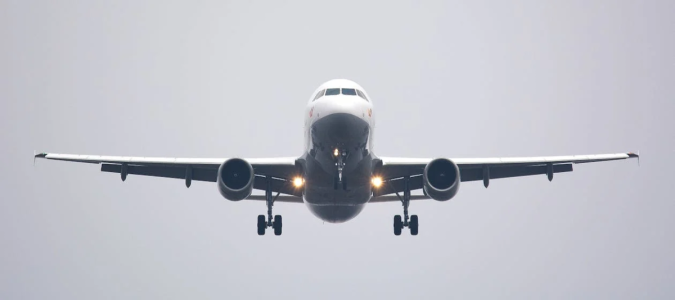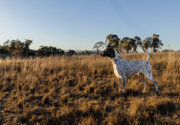Flying soon? You may unknowingly be making the trip harder for those around you
By
Maan
- Replies 11
Air travel can be a test of patience, especially when you're stuck in a confined space with strangers for hours on end.
While most passengers aim to be courteous, some behaviours can quickly turn a routine flight into a frustrating experience for those around them.
So, what makes certain travellers difficult to deal with? Let’s find out.
Not everyone realises they might be an annoying passenger until they're stuck on a plane with nowhere to escape.
According to behavioural experts at C-Me Colour Profiling, air travel often forces people into stressful situations that can lead to unexpected shifts in personality.
‘Air travel places people in a confined space for extended periods, often leading to stress and frustration.’
Their team, based in Bath, Somerset, explained that stress could make a confident traveller indecisive, a sociable person withdrawn, a calm flyer suddenly snappy, or an analytical thinker impulsive.
‘By recognising different behavioural patterns and stress responses, we can better understand why certain passengers become difficult and how to manage these situations effectively.’
They identified four types of difficult passengers, each with distinct triggers and behaviours.
Demanding Passenger
The Demanding Passenger was described as ‘assertive, easily frustrated and impatient.’
These passengers valued efficiency and control, meaning flight delays, slow service, or unexpected schedule changes could provoke a strong reaction.
During a flight, they were likely to call for attendants frequently, demand immediate solutions, or openly express dissatisfaction.
Triggers included ‘delays, inefficiency, limited options, and lack of responsiveness.’
Cabin crew were advised to ‘stay calm’, avoid mirroring the passenger’s frustration, and provide ‘clear options’ to give them a sense of control.
Overly Social Passenger
The Overly Social Passenger thrived on engagement and struggled with long flights that lacked interaction.
They were ‘talkative, excitable and prone to distraction’ and might initiate loud conversations or move around frequently.
These passengers could be triggered by ‘isolation, boredom or feeling excluded from group conversations.’
Crew members were encouraged to ‘politely acknowledge’ them while setting boundaries and suggesting alternative activities like watching films or reading.
Anxious Passenger
The Anxious Passenger tended to be ‘withdrawn, overwhelmed and uneasy.’
For them, flying was a stressful experience, with turbulence, crowded spaces, and general fear heightening their discomfort.
They might fidget, grip armrests, or avoid eye contact.
Triggers included ‘turbulence, unexpected changes, lack of reassurance or personal discomfort.’
Flight attendants were advised to ‘offer reassurance, keep a calm demeanour and provide distractions such as light-hearted conversation.’
Critical Passenger
The Critical Passenger was often ‘detail-oriented, negative and highly focused on perceived inefficiencies.’
They became irritated by disorder, last-minute changes, and noisy surroundings, frequently critiquing airline policies or displaying visible frustration.
Triggers included ‘disorganisation, lack of structure’ or ‘unexpected schedule changes.’
Experts recommended giving them space and responding with ‘factual, calm explanations’ while encouraging them to focus on reading or work.

The next time you’re on a flight, take a moment to observe—do you recognise any of these passenger types, or maybe even yourself? Have you ever had an encounter with a particularly difficult traveller?
Share your experience in the comments!
While most passengers aim to be courteous, some behaviours can quickly turn a routine flight into a frustrating experience for those around them.
So, what makes certain travellers difficult to deal with? Let’s find out.
Not everyone realises they might be an annoying passenger until they're stuck on a plane with nowhere to escape.
According to behavioural experts at C-Me Colour Profiling, air travel often forces people into stressful situations that can lead to unexpected shifts in personality.
‘Air travel places people in a confined space for extended periods, often leading to stress and frustration.’
Their team, based in Bath, Somerset, explained that stress could make a confident traveller indecisive, a sociable person withdrawn, a calm flyer suddenly snappy, or an analytical thinker impulsive.
‘By recognising different behavioural patterns and stress responses, we can better understand why certain passengers become difficult and how to manage these situations effectively.’
They identified four types of difficult passengers, each with distinct triggers and behaviours.
Demanding Passenger
The Demanding Passenger was described as ‘assertive, easily frustrated and impatient.’
These passengers valued efficiency and control, meaning flight delays, slow service, or unexpected schedule changes could provoke a strong reaction.
During a flight, they were likely to call for attendants frequently, demand immediate solutions, or openly express dissatisfaction.
Triggers included ‘delays, inefficiency, limited options, and lack of responsiveness.’
Cabin crew were advised to ‘stay calm’, avoid mirroring the passenger’s frustration, and provide ‘clear options’ to give them a sense of control.
Overly Social Passenger
The Overly Social Passenger thrived on engagement and struggled with long flights that lacked interaction.
They were ‘talkative, excitable and prone to distraction’ and might initiate loud conversations or move around frequently.
These passengers could be triggered by ‘isolation, boredom or feeling excluded from group conversations.’
Crew members were encouraged to ‘politely acknowledge’ them while setting boundaries and suggesting alternative activities like watching films or reading.
Anxious Passenger
The Anxious Passenger tended to be ‘withdrawn, overwhelmed and uneasy.’
For them, flying was a stressful experience, with turbulence, crowded spaces, and general fear heightening their discomfort.
They might fidget, grip armrests, or avoid eye contact.
Triggers included ‘turbulence, unexpected changes, lack of reassurance or personal discomfort.’
Flight attendants were advised to ‘offer reassurance, keep a calm demeanour and provide distractions such as light-hearted conversation.’
Critical Passenger
The Critical Passenger was often ‘detail-oriented, negative and highly focused on perceived inefficiencies.’
They became irritated by disorder, last-minute changes, and noisy surroundings, frequently critiquing airline policies or displaying visible frustration.
Triggers included ‘disorganisation, lack of structure’ or ‘unexpected schedule changes.’
Experts recommended giving them space and responding with ‘factual, calm explanations’ while encouraging them to focus on reading or work.
Key Takeaways
- Air travel stress can cause unexpected personality shifts, making some passengers more difficult to handle. Experts identify four common types of challenging flyers.
- The Demanding Passenger is assertive and impatient, reacting strongly to delays or inefficiencies. Providing clear options and maintaining a calm approach can help defuse tension.
- The Overly Social Passenger craves engagement and may be overly talkative or disruptive. Setting polite boundaries and encouraging alternative activities can manage their behaviour.
- The Anxious Passenger struggles with fear and uncertainty, often displaying nervous habits. Reassurance, distractions, and a calm presence can ease their discomfort.
- The Critical Passenger is detail-oriented and prone to frustration over inefficiencies. Giving them space and responding with factual, composed explanations can help reduce their irritation.
The next time you’re on a flight, take a moment to observe—do you recognise any of these passenger types, or maybe even yourself? Have you ever had an encounter with a particularly difficult traveller?
Share your experience in the comments!








